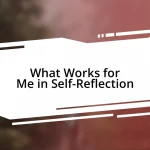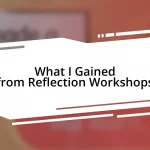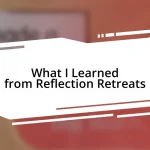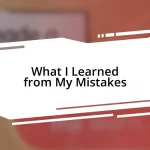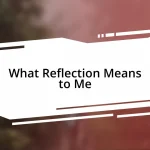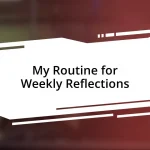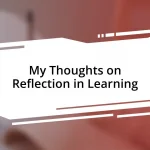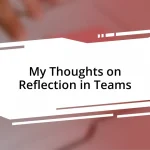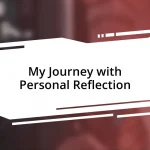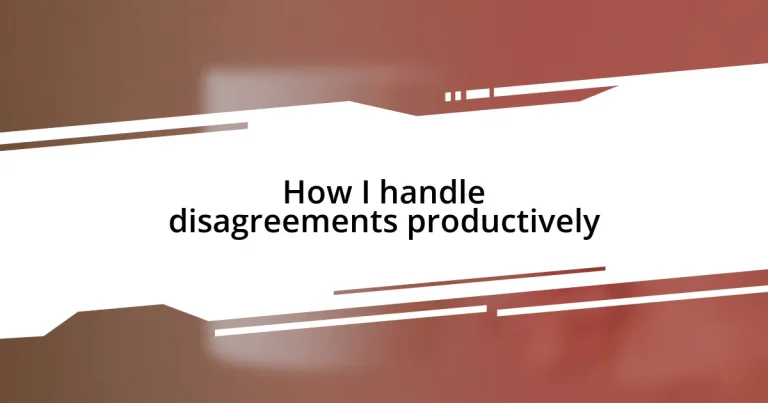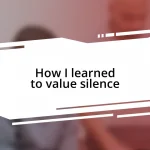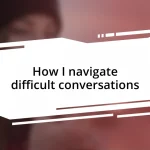Key takeaways:
- Disagreements can lead to deeper understanding and better solutions when approached positively and openly.
- Recognizing emotional triggers and practicing active listening enhances communication and can turn conflicts into constructive conversations.
- Expressing perspectives clearly and finding common ground fosters collaboration and helps reach mutually beneficial solutions.
- Reflecting on outcomes from disagreements promotes personal growth and can improve future interactions.
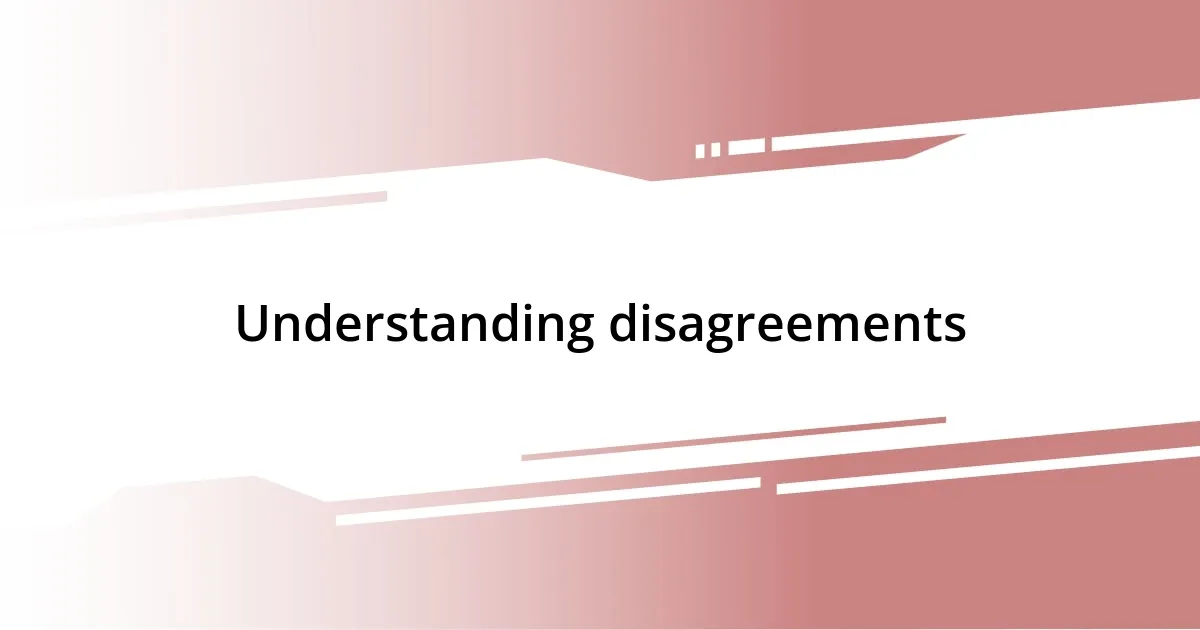
Understanding disagreements
Disagreements are often seen as conflict, but they can actually be windows into deeper understanding. I remember a time when a colleague and I clashed over a project direction. While it felt uncomfortable at first, this confrontation pushed us to explore our differing perspectives and ultimately led to a more robust solution that neither of us could have achieved alone.
It’s fascinating how our emotions color our perception during a disagreement. I find myself, at times, feeling frustrated when someone dismisses my ideas too quickly. Have you ever felt that way? It’s essential to recognize that those feelings are valid and can prompt us to dig deeper into the ‘why’ behind our differences, rather than simply reacting in the moment.
Understanding disagreements means acknowledging that they aren’t inherently negative. Instead, they can highlight gaps in knowledge or values. For instance, during a family discussion about future plans, contrasting opinions sparked a meaningful dialogue. As we shared our thoughts, I realized how my hesitance stemmed from fear of change, while others were excited about new opportunities. This exploration transformed what could have been an argument into a chance for deeper connection.
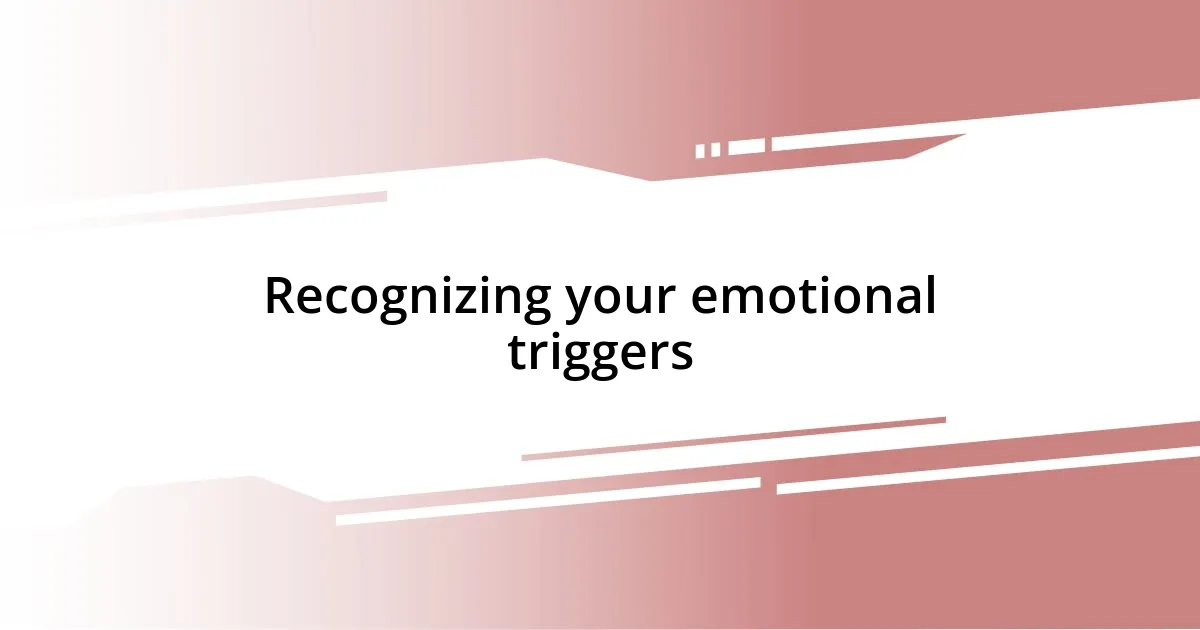
Recognizing your emotional triggers
Recognizing your emotional triggers is a crucial first step in navigating disagreements effectively. I recall a moment when I was vehemently defending a point, only to realize later that my heated response stemmed from past experiences where I felt unheard. This awareness allowed me to approach future discussions with a more open mindset, transforming my emotional reactions into opportunities for growth rather than conflict.
To start identifying your emotional triggers, consider these key signs:
- Physical Reactions: Notice if your heart races or your palms get sweaty when certain topics arise—these might be indicators of deeper issues.
- Changes in Tone: Pay attention to shifts in your voice. A raised tone can signal emotional suppression just beneath the surface.
- Feelings of Defensiveness: If you find yourself becoming defensive, it may be a hint that a personal value or belief is being challenged.
- Recurring Patterns: Reflect on past disagreements. Are there common themes that ignite strong emotions, such as criticism or lack of acknowledgement?
By being attuned to these triggers, you can better manage your emotional responses and engage more constructively.
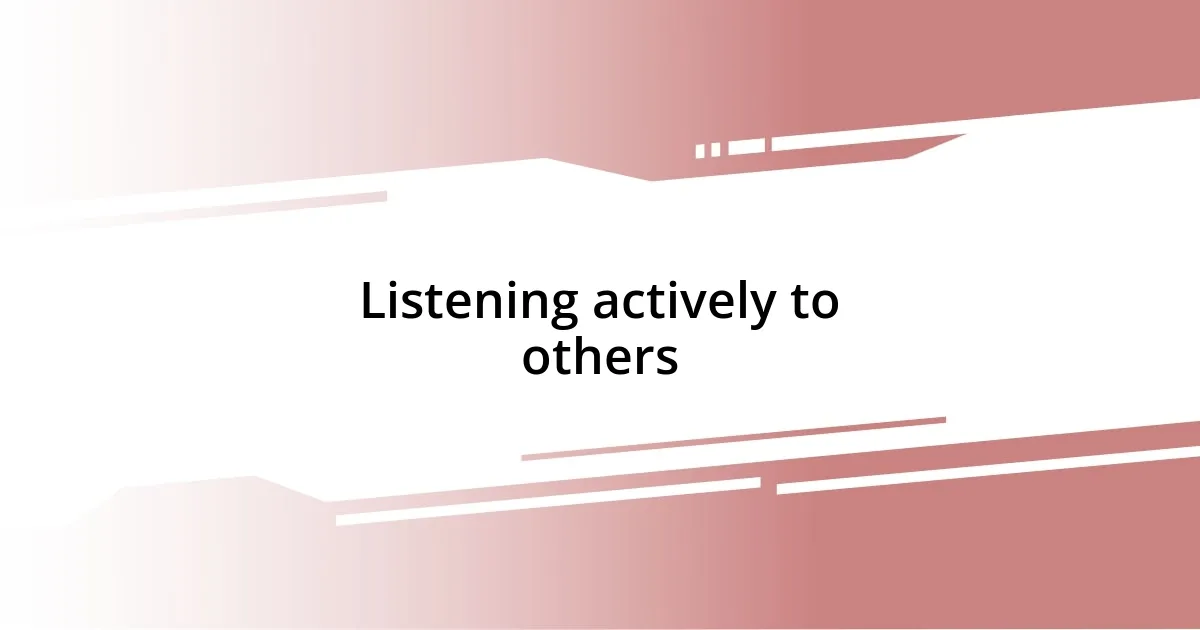
Listening actively to others
Listening actively to others is more than just hearing their words; it’s about truly understanding their perspective. I recall a meeting where a co-worker passionately shared their concerns about a project deadline. Instead of dismissing their thoughts, I took a moment to fully absorb what they were saying. It struck me how often we listen to respond rather than to understand. I decided to ask clarifying questions, which not only showed my engagement but also helped me see the validity in their point of view.
I’ve learned that active listening fosters trust and encourages open dialogue. For example, during a heated discussion with a friend about our weekend plans, I made a conscious effort to reflect back what they were saying. This wasn’t just about exchanging ideas; it created an atmosphere where both of us felt heard and valued. It was enlightening to see how that simple act of listening led us to explore compromises we hadn’t initially considered.
Moreover, active listening helps in diffusing tension during disagreements. I remember a tense family dinner where a disagreement escalated quickly. I decided to focus on understanding each person’s feelings instead of jumping to conclusions. Asking open-ended questions helped everyone articulate their concerns, transforming a potential argument into a constructive conversation. By truly listening, I was not only able to understand my family members better but also to connect on an emotional level.
| Active Listening Techniques | Benefits |
|---|---|
| Paraphrasing | Shows understanding and encourages clarification. |
| Asking Open-Ended Questions | Invites deeper exploration of feelings and thoughts. |
| Nonverbal Cues (nodding, maintaining eye contact) | Indicates engagement and respect for the speaker. |
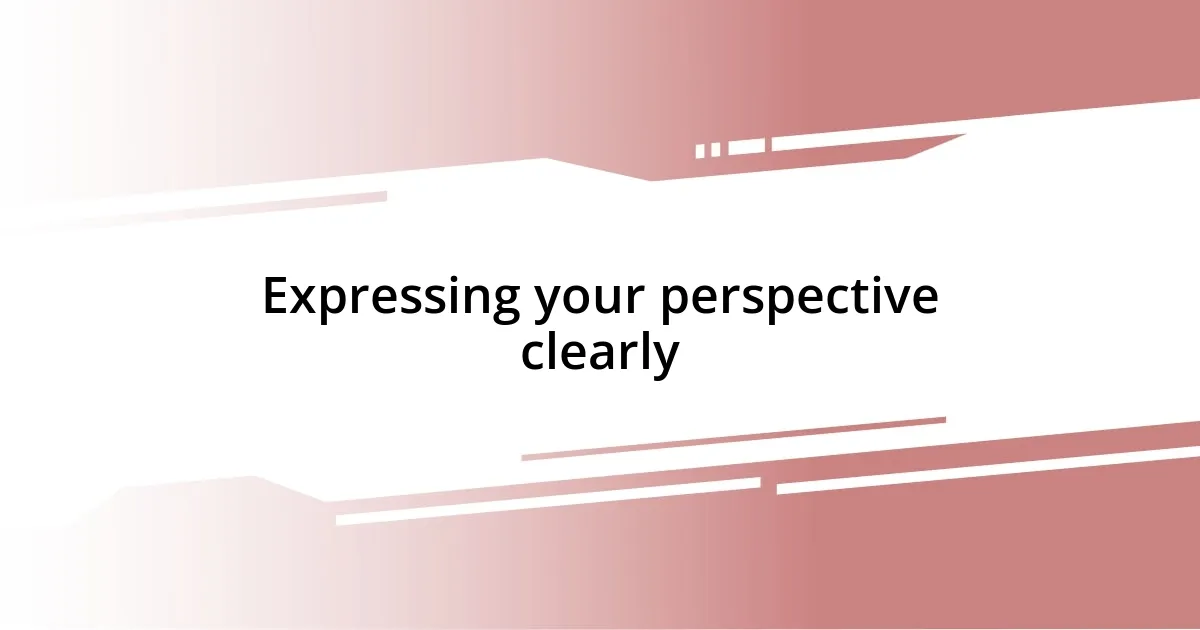
Expressing your perspective clearly
When I need to express my perspective, clarity is essential. One time, I found myself in a disagreement with a colleague over project priorities. Instead of just stating my opinion, I took a moment to structure my thoughts. I shared not just what I believed, but why I believed it, linking my viewpoint to our shared goals. It made all the difference. Have you ever noticed how articulating your reasoning can help others understand your position better?
I believe it’s important to choose my words carefully. There was a discussion in a team meeting where emotions were running high. I learned that using “I” statements rather than “you” helped keep the conversation focused on my feelings, rather than putting others on the defensive. For instance, saying “I feel overwhelmed by the deadlines” instead of “You are not giving us enough time” fostered a more constructive dialogue. How might tweaking your language shift the tone of your conversations?
The context in which I express my perspective also matters. When I broached a sensitive topic with my friend over coffee, I ensured it was a relaxed environment. Choosing the right moment allowed me to express my thoughts without the chatter of distractions. It’s a reminder that the “when” can be just as crucial as the “what.” Have you ever considered how your environment affects the way you convey your ideas?
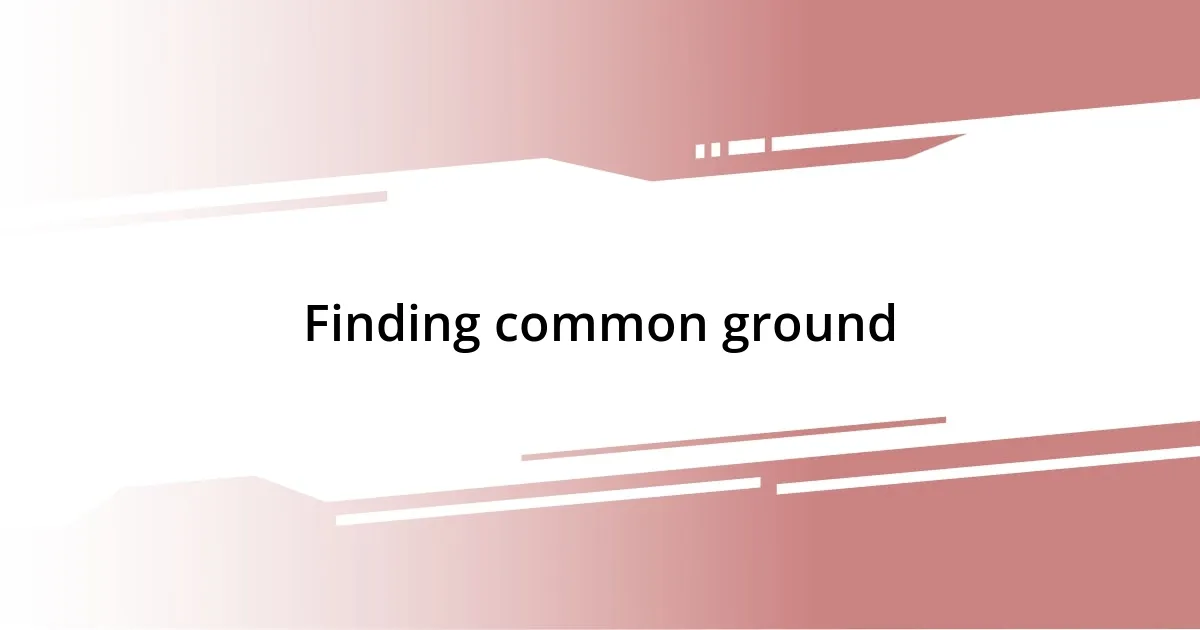
Finding common ground
Finding common ground is a vital step in resolving disagreements. I recall a situation with a neighbor where we had starkly different opinions on property boundaries. Instead of approaching the topic with defensiveness, I suggested we walk the perimeter together. This simple act allowed us both to see things from the other’s perspective and ultimately led to a mutual understanding of where our boundaries really lay. Have you ever tried a physical approach to solving a conflict? It can make discussions feel less confrontational.
In another instance, during a discussion with a friend about vacation destinations, we both held firm views. I decided to list what we each valued in a trip—relaxation versus adventure. This exercise highlighted similarities in our interests rather than differences. Through that realization, we discovered a destination that offered both relaxing beaches and thrilling excursions. Isn’t it fascinating how identifying shared values can pave the way for compromise?
I find that humor can also be a powerful tool in finding common ground. Once, during a tense debate on politics at a family gathering, I made a light-hearted comment about our shared love for a particular sports team. This quick shift in mood allowed us to see each other not as opponents but as family members with differing views. Have you ever noticed how laughter can dissolve barriers? It’s about shifting the energy from contention to collaboration.
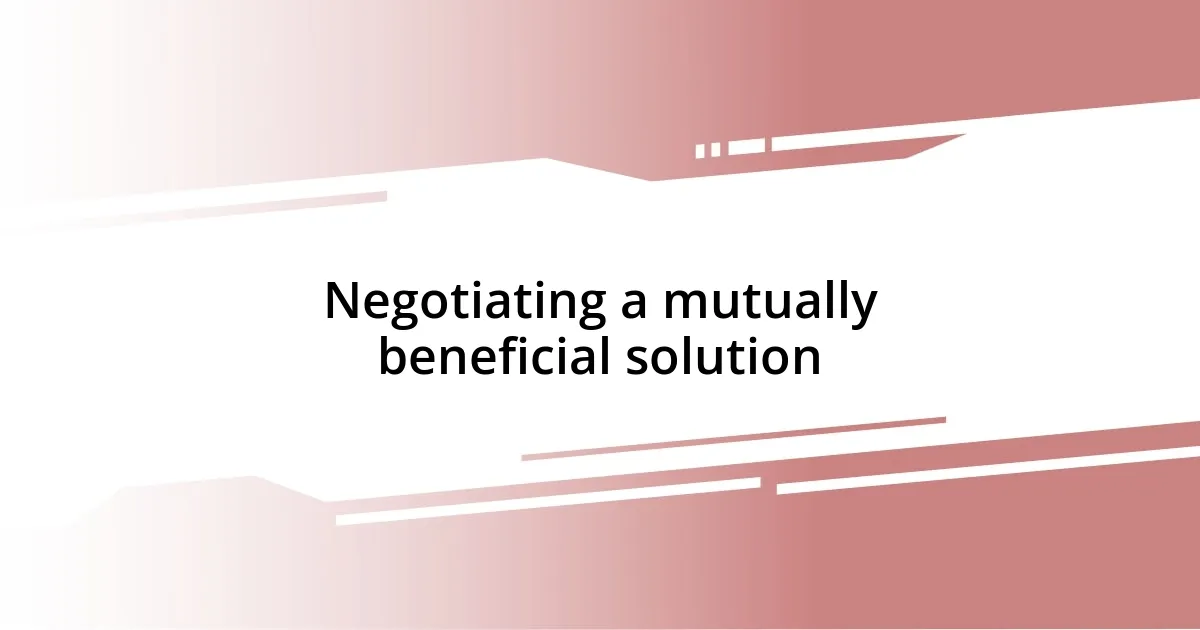
Negotiating a mutually beneficial solution
When negotiating a mutually beneficial solution, I often reflect on how essential it is to embrace flexibility. For instance, I remember a time when my team and I were developing a marketing campaign, and we faced a significant disagreement on the budget. Instead of insisting on my preferred allocation, I proposed a brainstorming session where everyone could express their needs and concerns. I found that this open dialogue helped us uncover creative solutions, such as reallocating funds from less critical areas, which ultimately satisfied everyone involved. Have you ever tried a brainstorming session to resolve a disagreement? It can be surprisingly effective.
Another experience that stands out happened during a community project. I realized that instead of clinging to my ideas, I needed to cultivate a mindset of collaboration. So, when tensions rose about design choices, I invited my team to explore pros and cons of each option together. Surprisingly, this collective approach led us to develop a hybrid design that incorporated the best elements of everyone’s suggestions. Isn’t it amazing how collective ownership of a solution can enhance commitment to the outcome?
I’ve also learned that establishing a strong foundation of trust can significantly influence negotiations. There was a moment in my career when I had to negotiate with a vendor about service terms. Before diving into the particulars, I took the time to share my experiences with them, acknowledging their previous contributions to my projects. This personal touch fostered a more cooperative atmosphere, enabling us to reach an agreement that respected both parties’ needs. Have you ever noticed how trust can change the dynamics of a negotiation? It certainly can transform tense discussions into collaborative conversations.
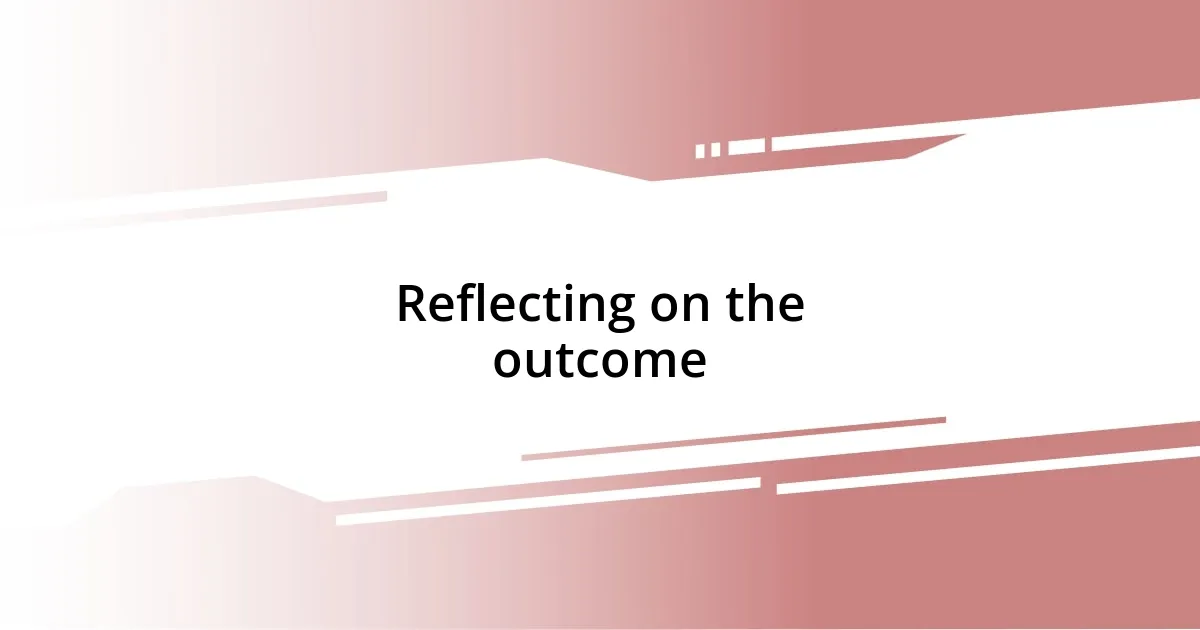
Reflecting on the outcome
Reflecting on the outcome of disagreements has taught me the importance of awareness in my interactions. After a heated discussion with a colleague about a project direction, I took a moment to assess how we both felt afterward. There was a surprising mix of relief and frustration in the air. I wondered: How could I turn those emotions into a catalyst for future collaboration? This reflection helped me identify what factors fueled our disagreement and how I could prevent similar conflicts moving forward.
I sometimes revisit past conflicts in my mind to understand their impact better. Not long ago, I found myself recalling a disagreement with a family member about financial planning. Looking back, I realized that my defensiveness created unnecessary tension. Reflecting on our conversation, I recognized that remaining open and encouraging honest dialogue could have led to a more productive outcome. Isn’t it intriguing how self-reflection can be a powerful tool for growth?
In moments when I reflect on conflicts, I find that journaling my thoughts can help crystallize my feelings. For instance, after facing a disagreement in a community meeting, I wrote down my experience and the lessons learned. The act of writing gave me clarity about my needs and how I could better communicate them next time. Have you ever tried capturing your thoughts in writing after a tough discussion? It’s a simple yet effective way to transform conflict into understanding.

